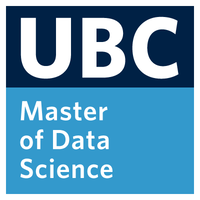The Bayesian Workflow#
Let us cheer up a little bit on the Bayesian side of things to its frequentist counterpart…
On one hand, Bayesian thinking has a broader bandwidth regarding how a Data Scientist can choose how to model the data coming from any population or system of interest. For instance, as in Lecture 4 - Markov Chain Monte Carlo, Stan, and Complex Bayesian Models, we can model the mean daily counts of bike-share rides according to how the weather is behaving in terms of thresholds of temperatures which will end up with interesting random latent variables in the forms of “elbows” and “slopes”. This would be translated into specific mathematical functions shaping our determined Poisson likelihood, allowing us to include further features as a systematic component making a Poisson regression catered to our specific statistical needs. Furthermore, we combine this likelihood with our prior knowledge (possibly coming from experts in the field) on our latent variables, which makes our model a comprehensive tool combining this knowledge with our gathered evidence contained in the likelihood (i.e., the Bayes’ rule in action).

Fig. 1 The Questioning Panda comes back.#
On the other hand, on the frequentist side, we might encounter a “traditional” Poisson regression involving a systematic component with the so-called fixed regression parameters (i.e., \(\beta_0, \beta_1, \dots, \beta_k\) in the presence of \(k\) regressors or features) which would involve a linear combination along with the observed values of the regressors per row in the training dataset. This frequentist generalized linear model (GLM) might look like a standard “statistical recipe” to make inference or predict a count-type response (i.e., the \(Y\)) in the presence of a set of features (i.e., the \(X\)s). Note that this way of modelling data in the form of frequentist recipes has a certain appeal for mainstream Data Science practice, given its ease in explaining all statistical findings to our stakeholders, which is understandable to a certain extent. On top of that, tools like the DSCI 562’s regression workflow (a.k.a. the Data Science workflow) make this frequentist modelling handy to execute so we can come with a coherent final storytelling in line with the initial main statistical inquiries of our stakeholders.
Having said all this, given the broader bandwidth we have in Bayesian data modelling, we might wonder:
Is it also possible to have a general Bayesian workflow to approach any data modelling problem in general?
The answer to the above question is “yes” to a certain extent. Accordingly, besides incorporating the application of the Bayes’ rule involving prior knowledge and observed evidence in this workflow, we need to define our simulation settings in regards to our chosen Markov Chain Monte Carlo (MCMC) approach to approximate the posterior distributions of our random parameters of interests (i.e., our random latent variables) combined with model diagnostics (as in Lecture 8 - More Hierarchical Modelling and MCMC Diagnostics). Finally, by also incorporating the main statistical inquiries and final storytelling with proper variable classification and initial exploratory data analysis (EDA), this Bayesian workflow can be depicted as in Fig. 2. Note this workflow is briefly implied at the beginning of Lecture 3 - Bayesian Statistics in Action: The Beta-Binomial Model and Lecture 4 - Markov Chain Monte Carlo, Stan, and Complex Bayesian Models.
Therefore, let us illustrate each one of the stages (i.e., horizontal lanes in the workflow):
Question. This stage refers to the main statistical inquiries of our stakeholders (inferential and/or predictive).
Prior knowledge. This stage involves consulting experts in our problem regarding the random parameters of interest, their prior distributions, hyperparameters, and our likelihood.
Data collection and wrangling. This is merely how data for our likelihood will be collected (according to the nature of the inquiries) along with its corresponding wrangling.
Exploratory data analysis. This stage is related to basic variable classification, which is used to perform data visualization so we can deliver descriptive and exploratory insights to our stakeholders.
Design. One of the most important stages in Bayesian data modelling. It includes a comprehensive design of the likelihood and prior setup (according to our defined random parameters of interest). Note this stage is iterative with the one related to prior knowledge. Furthermore, this stage also outlines the simulation settings for MCMC. To check how MCMC performs the simulation, in general, you can check Insights of Markov Chain Monte Carlo via the Gamma-Poisson Model.
Coding. Once the model is designed, we must code and compile it.
Simulation. The coded and compiled model will be used to perform the corresponding MCMC simulation in
RorPython.Model diagnostics. All our Markov chains of posterior samples per parameter of interest will be properly assessed to proceed to our posterior analysis (check Lecture 8 - More Hierarchical Modelling and MCMC Diagnostics).
Posterior analysis. This stage includes all posterior summaries and conclusions, depending on the nature of the main statistical inquires.
Storytelling. The conclusions of our data findings catered to our stakeholders. Note this stage might be iterative concerning the very first stage of the whole workflow.

Fig. 2 General Bayesian workflow for inferential and predictive inquiries. Components in bold letters indicate crucial steps in the workflow, whereas dashed coloured arrows depict jumps across more than one stage.#
